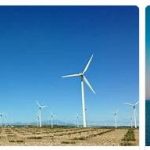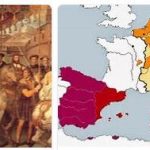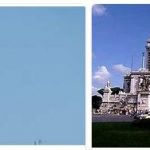The evolution of the energy balance is one of the fundamental elements to understand if and in what ways the economy of a country changes. From the end of the Second World War to the beginning of the 1970s, the Italian energy balance had evolved in the name of the inversion of the load diagram. In short, it was about this: in the pre-war phase, an intense use of hydraulic resources had been carried out, so that hydroelectric power covered the base of the load diagram, and to the other energy sources – thermoelectric and geothermal – the coverage of the peaks was reserved. of the question. The Italian industrial growth, which began in the 1950s, had caused a rise in the demand for energy at rates of over 7% per year. This had made it necessary to increasing use of fuels, to the point that thermoelectric power had covered the base of the load diagram and hydroelectric power was reserved to cover the peaks. Obviously, it was thermoelectric energy obtained largely from fuel oil deriving from the use of low-cost imported oil from the Arabian Gulf area. This policy had led to the establishment of powerful thermoelectric plants near the seaports, where the oil was unloaded. use of cheap imported oil from the Arabian Gulf area. This policy had led to the establishment of powerful thermoelectric plants near the seaports, where the oil was unloaded. use of cheap imported oil from the Arabian Gulf area. This policy had led to the establishment of powerful thermoelectric plants near the seaports, where the oil was unloaded.
The sudden rise in oil prices in 1973 forced a change in energy policy: the key word became ” differentiation ”. It is necessary to differentiate the energy balance in relation to the sources used, since the national energy demand at this moment depends on oil to a greater extent than in the other EEC countries. It is also necessary to differentiate the areas of origin of imported hydrocarbons, to avoid centralizing supplies in areas at risk such as those of the Arabian Gulf. The results obtained in the field of differentiation of energy sources can be summarized in the following terms: in 1973 liquid fuels covered 75.6% of energy demand, while at the end of the 1980s they covered just 56.7%; at the same time natural gas, of which national production has grown, has gone from 10.4% to 28.4%; solid fuels remained almost stationary (9.4% in 1973, 5.6% in 1989); the same happened for natural sources – geothermal and hydraulic – which went from 9.2% to 9.3%; nuclear sources, already modest, have ceased to participate in the energy balance.
These results are the product of very incisive interventions, especially on the organization of the territory and on environmental policy. In the early part of the 1980s it was thought that the most effective way to differentiate the energy balance consisted of fueling the thermoelectric power plants with coal instead of fuel oil. A plan was drawn up for the massive use of steam coal – to be imported from traditional areas, such as Poland and the United States, and from emerging areas, such as Australia, South Africa and China – which would have to be transported by large ships, with a capacity of 100,000. ÷ 150,000 t and disembark in two Tyrrhenian ports (Gioia Tauro and Vado Ligure) and in two Adriatic ports (Bari and Trieste), to be placed in local power plants and in the Italian consumer network. This plan was abandoned a few years later, above all due to strong opposition from environmental groups towards coal, a generator of fumes and dust that are harmful to the environment. Even more decisive opposition developed against the production of energy from nuclear fuels, up to the anti-nuclear referendum of 1987, as a result of which the plan to build nuclear power plants was abandoned, and the nuclear industry concentrated in Genoa was left without orders.
In terms of differentiating the origins of energy sources, the most incisive transformations have taken place in the field of hydrocarbons. In the early 1970s, the Middle East supplied 54.7% of the oil imported into Italy; this percentage dropped to 42% in the second half of the 1980s. During the same period, African countries (Maghreb and Guinean countries) increased their contributions from 35% to 43%; shares of a certain size were imported from the North Sea; imports from the Soviet Union increased; Norway and Mexico were included among the supplier countries. However, the biggest transformations have occurred in the field of natural gas, thanks to the increase in domestic production with extractions from the seabed. offshore in front of the Ravenna coast. During the 1960s, experimental productions grew. In the seventies, the events of the international market gave a great impetus to offshore production. Progress has been considerable. In the mid-1980s, about thirty platforms were in operation in the central and northern Adriatic, that is, in the so-called ” North Sector ” of ENI. Natural gas extractions were also carried out in Ionian areas. Off the south-eastern coast of Sicily, the first platform of the latest generation, capable of extracting oil from depths of more than 300 meters, came into operation. The participation of domestically produced oil in the national demand did not increase much: it went from 1.1 million in 1973 to 4.3 million tonnes in 1991. Overall, that of natural gas has not changed much either: in the same period it has from 15.3 to 17.4 billion m 3. However, the origin has changed: at the beginning of the 1990s, 73% of the national production was from offshore. Imports took place from Algeria, through the pipeline that connects it with Sicily, from the Netherlands and from the Soviet Union.
According to TOPSCHOOLSINTHEUSA.COM, the offshore mining activity could unfold in a maritime context very different from the traditional one. In fact, starting from the end of the 1980s the Italy it has carried out a rather energetic policy to acquire maritime belts under its jurisdiction and has had a driving function in the creation of continental shelves in the Mediterranean. According to international maritime law, the continental shelf is a strip of sea, extending up to 200 nautical miles from the baseline, within which the littoral state can exploit the resources of the seabed and subsoil. In practice, a littoral state cannot extract hydrocarbons from the sea bed except within the continental shelf under its jurisdiction. Assuming that the baselines of two countries are less than 400 nautical miles apart, it is necessary for governments to intervene in treaties to divide the marine space into two bands of respective relevance. In 1968 the Italy signed the first such treaty in the Mediterranean with Yugoslavia, in order to divide the Adriatic into two continental platforms, Italian and Yugoslav. This made it possible to initiate the natural gas extraction policy, as mentioned above.
The following treaties were then stipulated: in 1971, between Italy and Tunisia, to divide the continental shelf of the Strait of Sicily; in 1974, with Spain, to divide the continental shelf west of Sardinia; in 1977, with Greece, for the continental shelf of the Ionian Sea. At the same time there were two other important events. First, the Italy has redefined its baselines, bringing them much further into the sea than they were before. Non-negligible consequences have arisen: extensive stretches of coastal sea have become inland waters; all the bands of jurisdiction, such as territorial sea and contiguous area, have been transferred further to the sea, because their extent is measured starting from the baselines. Secondly, the the extent of the territorial sea was extended from 6 miles to 12 nautical miles from the baseline. In conclusion, since the beginning of the seventies the marine space subject to national jurisdiction has considerably expanded, making possible the diffusion of relevant maritime activities, such as aquaculture and extraction.hydrocarbon offshore.








